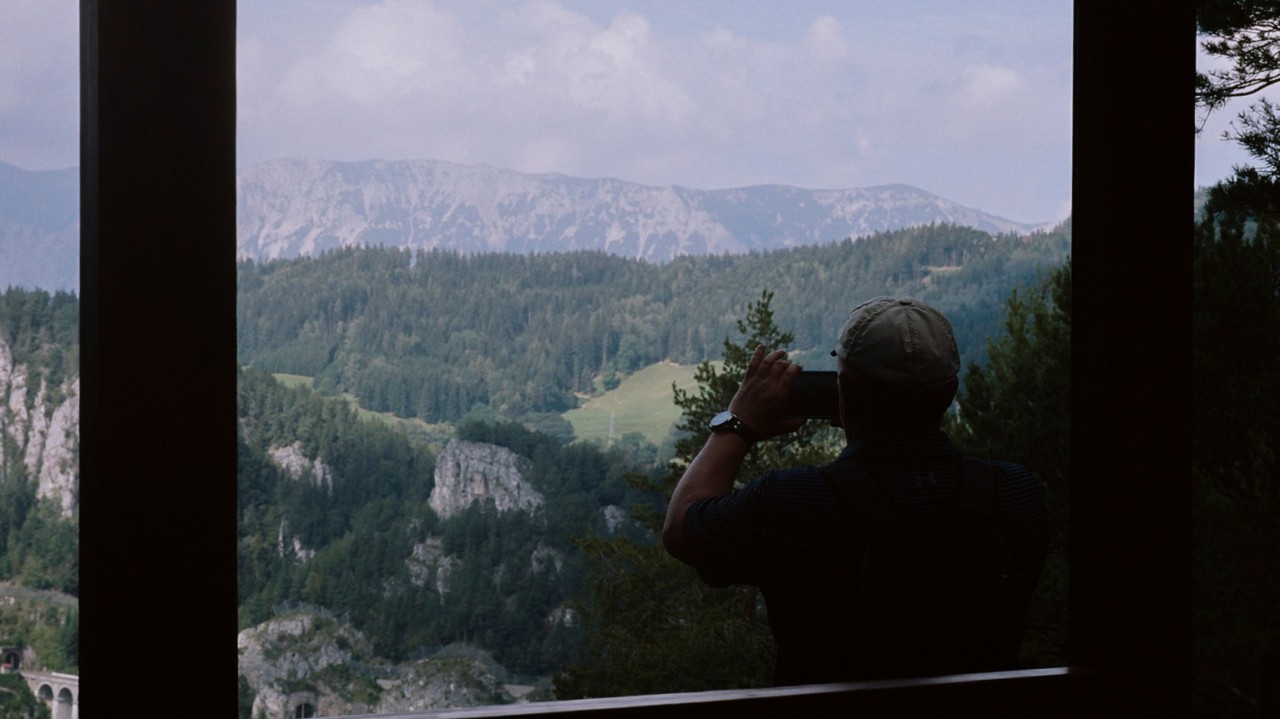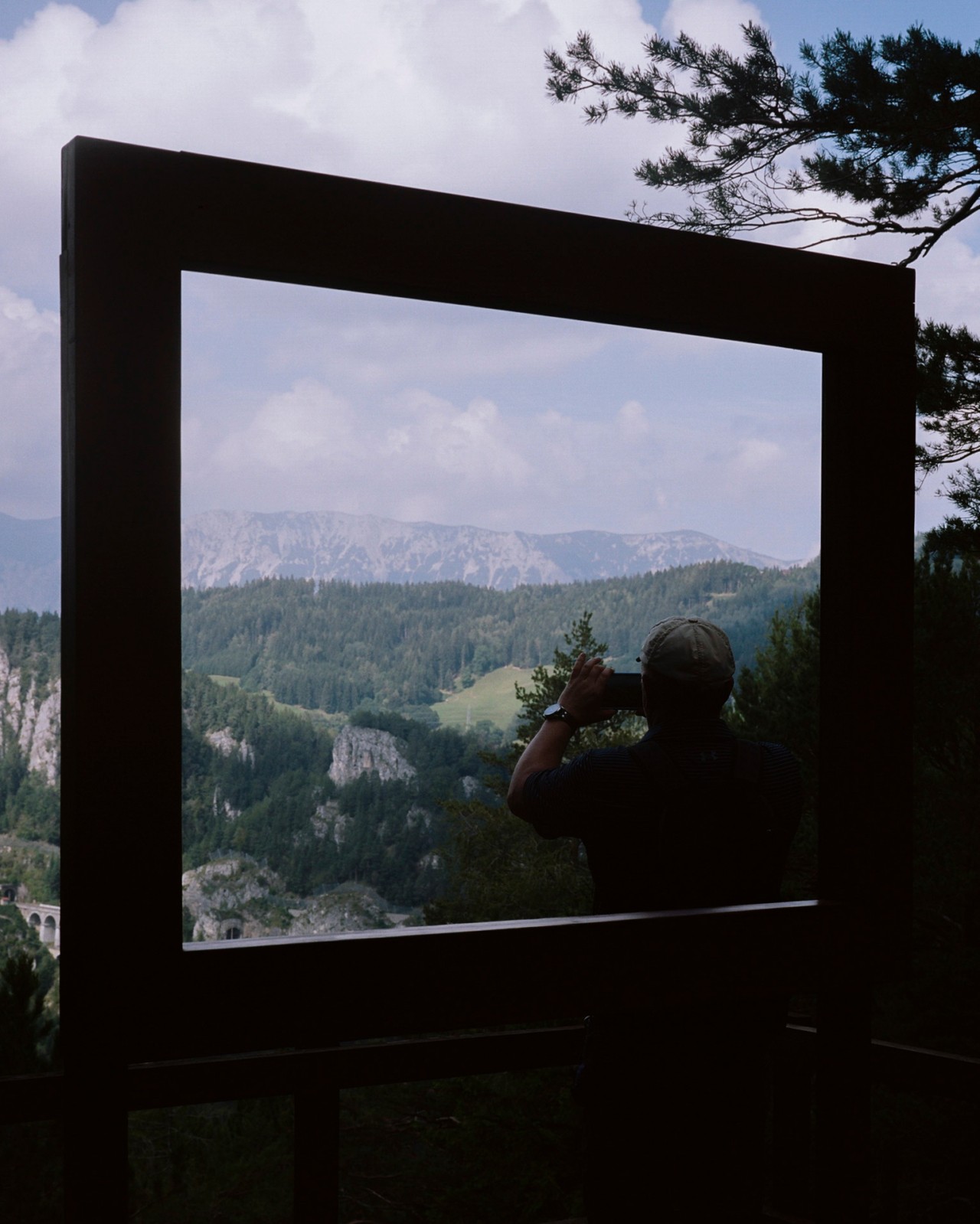

Photograph by Lisa Edi / Connected Archives
Words by Victoria Malloy
On Maya Bay in Thailand, the turquoise water once shimmered like a screensaver. But after The Beach put the small cove on the global map 25 years ago, boatloads of tourists came chasing the fantasy. The heavy crowds contributed to cloudy water, crumbling coral reefs, and catastrophic drops in fish populations. Officials now close the bay for two months each year to allow the ecosystem to recover.
The pattern extends far beyond Thailand. In Iceland, a country of just 380,000 residents, nearly 2.3 million tourists arrived in 2024, leaving its volcanic landscapes scarred by erosion and overuse. In the Galápagos Islands, nearly 330,000 visitors prompted officials to double entry fees in an effort to protect fragile habitats from mounting pressure. And on Mount Kilimanjaro, increasing numbers of trekkers have left trails eroded and litter-strewn, prompting stricter regulations on climbing expeditions.
But as fragile destinations buckle under pressure, surveys show a majority of travelers—more than 70%—aspire to travel more responsibly. The push and pull have helped spark what’s increasingly being called “activist tourism,” with a new wave of hotels and tour operators inviting guests to take part in protecting fragile environments. Some activities focus on stewarding the land; others go further, encouraging travelers to take part in restoration projects or conservation work. Conservationists say these efforts matter: Small choices, multiplied, can help secure a healthier planet for future generations. And with more than 300 million people traveling abroad in the first three months of 2025 alone, even modest shifts in behavior can have an outsized effect.
Whether activist tourism can live up to its promise comes down to execution. Simon Donner, a climate scientist at the University of British Columbia, is skeptical and cautioned that greenwashing can undermine environmental gains when trips function more as marketing than stewardship. “People need to come home feeling inspired to seek systematic, transformational change, not that the trip was their good deed for the year,” said Donner. “Otherwise, it is making the challenges we face even worse.”
Done ethically, activist tourism can deepen understanding, foster moral growth, and create lasting engagement, according to Dr. Siobhan Speiran, a postdoctoral researcher in wildlife tourism. “Enriching, empowering activities can have a reverberative impact,” she told Atmos, “often inspiring long-lasting commitments to responsible tourism and environmental action.”
Nowhere is the rise of “activist tourism” more visible than in the oceans, where citizen science and hands-on projects are turning vacations into acts of stewardship.
At Kisawa Sanctuary on Mozambique’s Benguerra Island, a “Resort to Research” philosophy invites guests to join studies led by the Bazaruto Center for Scientific Studies. On “Dive Like a Scientist” expeditions, visitors help survey megafauna across 13 dive sites alongside BCSS researchers, gathering data that informs global marine conservation. Guests see the Bazaruto Archipelago firsthand—home to the ocean’s “Big Five,” including East Africa’s last viable dugong population—while contributing to research that extends long after their stay, said Dr. Mario Lebrato, chief scientist at BCSS.
Similar experiments are unfolding thousands of miles away. In the Maldives, where reefs are a vital coastal shield and the backbone of tourism, marine biologists at Patina Maldives in the Fari Islands guide visitors through coral propagation projects. Guests attach coral fragments to molded ceramic structures designed to improve survival rates; more than 4,000 fragments have already been planted, creating new habitats for fish. In Indonesia’s Raja Ampat, at Misool Resort, visitors work with coral farmers to restore reef flats once devastated by dynamite fishing, wiring healthy fragments to mesh frames that anchor new growth.
“People need to come home feeling inspired to seek systematic, transformational change, not that the trip was their good deed for the year. Otherwise, it is making the challenges we face even worse.”
But reef restoration isn’t only about planting coral. It also requires tackling the threats that keep reefs from recovering. Lionfish, known for their striking spines and stripes, have become a destructive invasive species across the western Atlantic, Caribbean, and the Gulf of Mexico. A single lionfish can reduce native fish recruitment on a reef by nearly 80%, while devouring the herbivores that keep algae in check. With no natural predators, their populations have exploded. The Family Coppola Hideaways Turtle Inn in Belize enlists guests in reef-protection dives to remove lionfish—then serves the catch as a sustainable meal.
And in Hawai’i, the problem takes another form. There, fast-spreading algae fueled by agricultural runoff, sewage, and sediment smother coral reefs and native habitats. Rooted in the Hawaiian value of mālama—“to give back”—visitors join cleanup projects such as those led by Mālama Maunalua, which has already removed millions of pounds of algae to help reefs rebound.
Eco-tourism on land is also moving beyond passive wildlife encounters, bringing travelers closer to the frontlines of conservation. In growing numbers of parks and sanctuaries, guests are invited to support research, aid rehabilitation, and in some cases, participate in interventions that can determine whether species survive.
One model centers on scientific partnerships. In Churchill, a subarctic town in northern Manitoba best known for its polar bears, Frontiers North Adventures runs six-night conservation journeys with Polar Bears International, where travelers live among wild bears on the Tundra Buggy Lodge, learning from scientists about their biology and ecology, and spend days aboard the Tundra Buggy—a mobile research station.
Another emphasizes community ownership and animal welfare. In northern Kenya, the Indigenous-run Reteti Elephant Sanctuary rescues orphaned calves with the aim of returning them to the wild. Visits are immersive but intentionally non-contact to protect the elephants’s welfare. Guests at nearby Sarara lodges can walk with keepers as they guide the herd into the bush, witnessing rehabilitation efforts firsthand. In Chiang Mai, Thailand, Elephant Nature Park, founded by renowned elephant rights advocate Saengduean ‘Lek’ Chailert, offers a similar approach, rescuing elephants from exploitative attractions. Visitors help feed and observe the animals, with their donations funding ongoing rescue and care of elephants in destitute situations.
A third approach involves more hands-on interventions. Wilde Tracks places guests alongside veterinary teams and rangers for anti-poaching patrols, collaring, bush tracking, and even rhino dehorning—part of broader efforts to combat poaching, which affects a rhino every 15 hours in South Africa. Singita, a conservation-focused lodge operator, integrates visitors into rhino health checks, K9 anti-poaching units, and Care for Wild, the world’s largest rhino sanctuary. “Guests leave as powerful storytellers, who often continue to drive support in their own networks as lifelong advocates for nature,” said Inge Kotze, executive head of conservation at Singita.
Some projects aim to broaden the scope to include lesser-known species. Volcanoes Safaris is best known for protecting great apes, but also helps safeguard Uganda’s rare tree-climbing lions. At Kyambura Gorge Lodge, guests join the Lion Monitoring Project led by biologist Alex Braczkowski, contributing to research on game drives by logging GPS data, photographing lions and seeing how science guides carnivore conservation.
More conservation experiences are now designed for children and families, to cultivate future climate leaders. “The ability for children to understand and care about complicated and systemic issues is underestimated,” said Speiran.
At the Jean-Michel Cousteau Resort in Fiji, a legacy of more than four decades of ocean conservation underpins children’s programs. Activities range from Soil School and mangrove restoration to giant clam farm visits and nature walks with Fijian elders. Resident marine biologists Johnny Singh and Ofaine Morell describe reefs and coastlines as “living classrooms” that teach children the tangible role they can play in protecting Fiji’s environment.
At Playa Viva in Mexico, families take part in turtle conservation at La Tortuga Viva, a sanctuary that has released more than 500,000 hatchlings since 2010. Children help relocate eggs, clean nests, patrol beaches at night, and release hatchlings at sunrise: experiences that spark wonder while instilling a lasting connection to wildlife.
But these kinds of immersive programs are often costly and concentrated in remote destinations. That can make them inaccessible to solo travelers, let alone families. Speiran stresses that equally powerful lessons can come from closer to home—whether restoring wetlands, volunteering at wildlife centers, or joining community cleanups. Such efforts, she said, can be just as impactful in sparking children’s care and commitment to the natural world.
“Guests leave as powerful storytellers, who often continue to drive support in their own networks as lifelong advocates for nature.”
Beyond affordability lies another tough question: Do these experiences achieve real change? Donner warns that conservation-themed tourism can sometimes be little more than virtue signaling. “This matters,” he said, “because rather than encouraging people to think about the actual drivers of the climate crisis and the need for transformational change, [these experiences] can give people a false sense of ‘making a difference’ while allowing them to ignore deeper issues.”
For travelers seeking experiences that truly do good, Speiran emphasizes the importance of learning how to spot greenwashing and distinguish ethical from unethical attractions. Genuine efforts, she said, are tied to place: understanding the setting, the legal and cultural status of wildlife, and the practices of tour operators is paramount. She points to the “sustainability triangle”—weighing economic, environmental, and social impacts—as a guide for assessing whether an experience is genuinely sustainable.
Approaching such experiences with integrity, Speiran added, means supporting community-led initiatives, respecting cultural and ecological boundaries, and ensuring that tourism contributes to long-term impact rather than short-term gratification. “Those drawn to activist and conservation-oriented tourism are likely concerned about the climate crisis, motivated to engage in activities which benefit the environment, and driven by a desire for a closeness to nature,” she said. “They want to be an agent of good during a time when many of us feel challenged by circumstances that feel beyond our control.” The opportunity, and challenge, is to ensure that urge translates into lasting change.
Can Tourism Help Save the Places It Endangers?